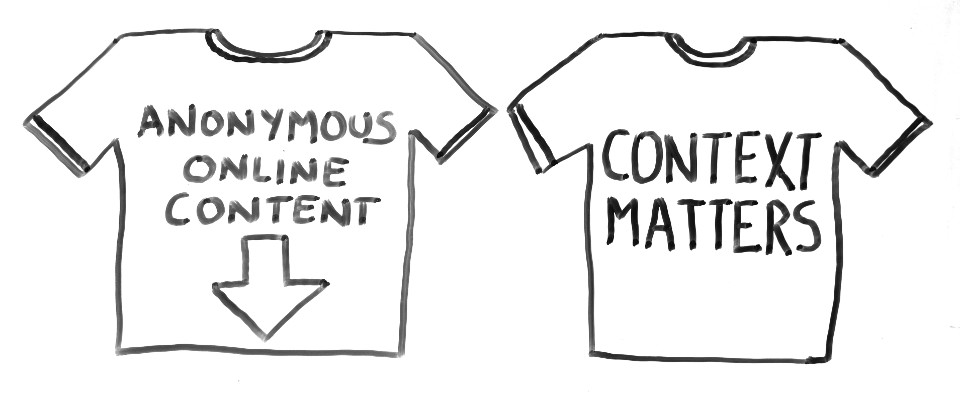
Where are we going with a blog post entitled “Physical Expression, Digital Expression, and the Penis T-Shirt”? Well, if you’ve ever heard of or used Chatroulette, you surely recall the infamous penis problem: a significant proportion of male users would exhibit themselves via this means of online expression. Why then, in the real world, don’t we see the same proportion of men wearing say, t-shirts portraying a photo of their naughty bits?
How does this relate to reelyActive? For months, we’ve operated a live directory on a flatscreen display at Notman House, a startup space in Montreal. The name, face, company and job title of everyone present and carrying one of our tags is displayed for all to see. It’s a project that has been well received, and we postulated on how it could be improved, for instance by allowing the users to generate their own content for the display.
Do you see where we’re going with this?
We asked ourselves if live directories would degenerate into something like the Chatroulette penis problem if users were in control of their own content. It seemed far fetched to think that the startup community at Notman House would jump at the chance to expose themselves on the flatscreen display. But as students of science, we felt compelled to understand the foundation for our sentiment.
The content displayed on the flatscreen is analogous to wearing a t-shirt: you can (and should) expect everyone in the startup house to see it. Therefore, one’s behaviour in selecting content is guided by the same social contract as selecting what t-shirt to wear out of the house. Of course the t-shirts worn at a startup house are likely to differ from those worn at a concert or a sporting event, but in each case, they’re intended for the context, and subject to a real-world audience, their reactions and any ensuing consequences.
In other words, the principles of real-world social interaction equally apply to “digital t-shirts”. We’ve never seen anyone wear a penis t-shirt at Notman House (N.B. that’s not a challenge!), so why should we expect any different for the digital version? As long as digital expression is curated by physical presence, we would expect this to hold true. Time to test the hypothesis!
Comments
2 responses to “Physical Expression, Digital Expression, and the Penis T-Shirt”
[…] to know where it is and who/what is around at a level of proximity similar to that discussed in Physical Expression, Digital Expression, and the Penis T-Shirt. Sticking to the movie example, Amber Case’s so-called invisible button to silence the phone […]
LikeLike
[…] 2013 we blogged about Physical Expression, Digital Expression, and the Penis T-Shirt (oh, do we have your attention now?) where we argued […]
LikeLike